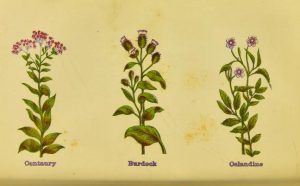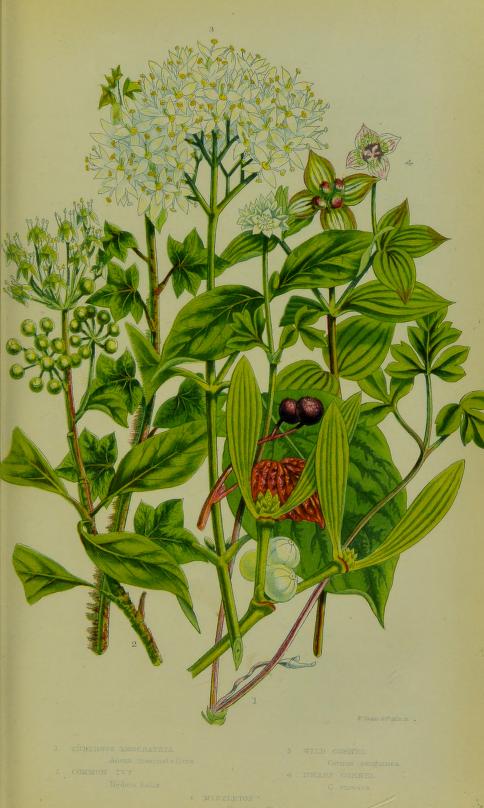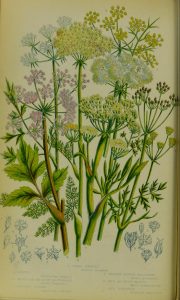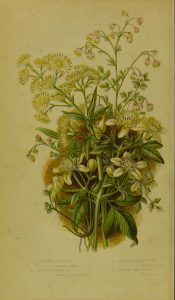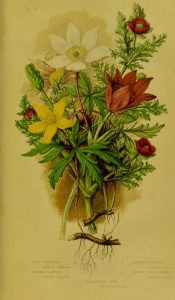Primary Source Sets
MHL Collections
Reference Shelves
Tag: King’s College London
Images from the Library
From Anne Pratt’s The flowering plants, grasses, sedges, and ferns of Great Britain : and their allies the club mosses, pepperworts, and horsetails Volume 3 (1873).
Images from the Library
From Anne Pratt’s The flowering plants, grasses, sedges, and ferns of Great Britain : and their allies the club mosses, pepperworts, and horsetails Volume 3 (1873).
Images from the Library
From Anne Pratt’s The flowering plants, grasses, sedges, and ferns of Great Britain : and their allies the club mosses, pepperworts, and horsetails Volume 1 (1873).
Images from the Library
From Anne Pratt’s The flowering plants, grasses, sedges, and ferns of Great Britain : and their allies the club mosses, pepperworts, and horsetails Volume 1 (1873).
While We Were Out…
…new items were being added to our collection steadily! Here are a few:
- The Gauzette, Volume 7, No 1 (1974)
- The labyrinth of animals: including mammals, birds, reptiles and amphibians (1907)
- Lectures on clinical psychiatry (1906)
- Lunacy practice: a practical guide for the certification and detention of persons of unsound mind (1905)
- Die sexuelle Frage: eine naturwissenschaftliche, psychologische, hygienische und soziologische Studie für Gebildete (1905)
- Notes on the composition of scientific papers (1904)
- The varieties of religious experience: a study in human nature : being the Gifford lectures on natural religion delivered at Edinburgh in 1901-1902 (1903)
- The Bulletin (1935)
As always, for more from the Medical Heritage Library, please visit our full collection!
Digital Highlights: Bell’s Art
Sir Charles Bell (1774-1842) is probably best known for his work in the human nervous system. He was one of the first to work out the detailed ramifications of human nerves and their myriad connections and interconnections. His work proved to be foundational in the field of neuroscience and resulted in the naming of at least one condition after him, Bell’s Palsy, a form of temporary facial paralysis.
Bell also had interest in the arts and some practical experience as an artist. This gave him some advantage in terms of describing his anatomical dissections and presenting them both to other medical professionals and the public. He also wrote an early book on the application of knowledge learned from medical dissection to art: The anatomy and philosophy of expression as connected with the fine arts. This was first published in 1806 but republished at least once later in the century after Bell had achieved a position of prominence in Victorian London.
Flip through the pages of Bell’s work below or follow this link to read The anatomy and philosophy of expression as connected with the fine arts.
New to the MHL!
Last week we announced the official opening of over 3,000 digitized volumes of historical medical journals.
Here are some highlights of what else is new in our collection:
- THE HISTORY OF THE MEDICAL DEPARTMENT OF THE UNITED STATES NAVY IN WORLD WAR II Volume 1: A Narrative and Pictorial Volume (1953)
- Laws, Regulations And Instructions Relating To The Care Of The Insane (1946)
- Internationale Beiträge zur inneren Medicin: Ernst von Leyden zur Feier seines 70 jährigen Geburtstages am 20. April 1902 gewidmet von seinen Freunden und seinen Schülern (1902)
- La psychologie des sentiments (1896)
- A complete guide to the improvement of the memory or the science of memory simplified: with practical applications to languages, history, geography, music, prose, poetry, shorthand, etc. (1890)
- The life and letters of Charles Darwin: including an autobiographical chapter (1888)
- The Pulse (1939) (And there are lots of other issues of this – stay tuned for a guest blog post about this title.)
- Regional anatomy in its relation to medicine and surgery (1890)
And as always for more from the Medical Heritage Library, please visit our full collection!






